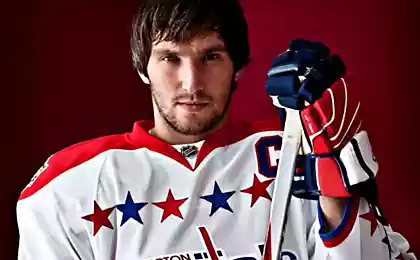871
Sponsored tricks
Reasons to Purchase - this is a great mystery advertising. And despite the fact that the analysis of the motives and engaged in a constant search for and advertisers and agencies often find the right strategy fails strictly by experimentation.

Some modern sellers just give two pieces of three (as in the photo in the header). These professionals affect people thinner SNICKERS
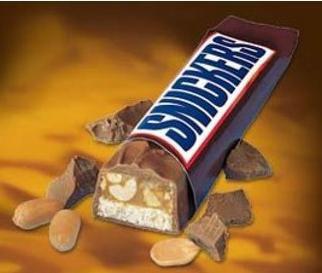
In Russia the first Snickers chocolate bars appeared in 1992 and positioned as a snack, which replaces a complete meal. Former Soviet consumer a long time to get used to the fact that instead of soup for lunch, you can eat chocolate, Snickers and bought as a "sweet tea". After the brand was engaged in creative services agency BBDO Moscow, Snickers repositioned for teenagers who for the most part like all sweet and do not like soup.
Alka-Seltzer

Once in the 1960s in advertising Alka-Seltzer threw a glass of water, not one as before, but two tablets - drug sales grew exactly twice. Cunning publicity stunt invented agency Tinker & Partners.
There are similar stories about the brilliant marketer who first came up with instructions on how to use a shampoo that it should be applied to the hair and wash twice, which led to double-digit growth in sales.
Pepsi
Pepsi in the Soviet Union, Nikita Khrushchev, first advertised.

PepsiCo's Don Kendall pours another Pepsi for Premier Nikita Khruschev at the American National Exhibition in Moscow in 1959 as US Vice President Richard Nixon looks on. Photo from www.usatoday.com
In 1959, at the American National Exhibition in Moscow in Sokolniki Americans, skillfully playing the role of hosts, Nikita Khrushchev offered a drink on the sample. A picture in which the Soviet leader holding a cup with the logo of Pepsi, delayed to come down from the pages of newspapers and magazines advertising. The significant moment in the history of the brand is considered a "Happy Birthday» Pepsi in Russia.
Parliament
Tobacco brand Parliament went the other way. Initially, his prices were below the main competitor Marlboro, and sales have been relatively modest, as they are faced with many competitors in the low price category in which feature their exclusive filter no one appreciated. Then the brand a year left the market and went out again at a price higher than Marlboro, once hitting a niche "premium" which is just different from all other filter came into the season.
Woolworth
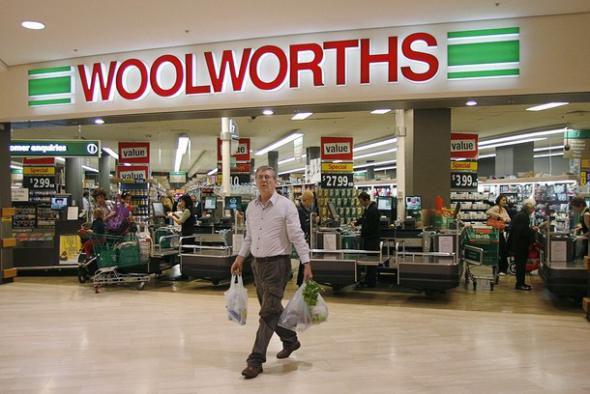
The founder of the largest network of stores Woolworth and inventor tsennnikov grocery and supermarkets found the right insight that allowed him to put together millions fainting from fear. Shy and stammering young man from the village, aged 21, got a salesman in a small shop. While the price of goods in shops, placed on the counter for the seller is not specified. Seller "by eye" defines the creditworthiness of the buyer, and called its price. Then the buyer or traded, or care. Poor Frank did not know how and was very afraid to entice buyers, praising the goods and haggle. So afraid that one day even fainted during service. As punishment, the shopkeeper punished him so that he left to trade one for the day, threatening that if the revenue is less than the normal day, he was fired. Before opening the store Frank attached to all goods piece of paper with the minimum possible price (prototype of the modern price tag). All unsold goods piled up in the warehouse, he put on a huge table with attachment plate with the inscription "All five cents." He put the table near the window so that the goods, and the plate was visible from the street. And shaking with fear waited for customers by hiding behind the counter. All merchandise was sold out in a few hours, and revenue per day was smooth week. Buyers, second-hand goods in the hands and saw it written on the price without haggling gave money. Frank retired from the owner, took the money and opened his own shop. In 1919, Woolworth empire consisted of thousands of shops, and a personal fortune of Frank was about 65 million.
"Guinness World Records»

The famous and the best-selling (after the Bible) "Guinness World Records" is nothing more than a publicity stunt invented by Managing Director brewing company Guinness, Sir Hugh Beaver.
In 1954, at a dinner hosted by "Wexford" for hunters, Hugh Beaver launched into a discussion with someone of the guests who fly faster - plover or the grouse. And then it dawned on Beaver and that across the globe during just such a small get-togethers over a beer unfolding real debate on "the most most." He decided that he should create a book that will contain the records officially confirmed in all sorts of areas.
Year went to research, and August 27, 1955 the first 198-page book was ready. The success was stunning: before Christmas she became a bestseller in the UK, bringing the beer brand a good income.
Dewar's
In London in the late 19th century were very popular brandy, rum and gin. Therefore, to promote the whiskey was not easy. Tricky Thomas Dewar, one of the founders of the family brand, chose an unexpected strategy. He hired straw buyers who visited various pubs, requiring them to pour whiskey Dewar's. Naturally, it will not be available, and they left. After several parishes Dewar himself appeared at the bar and offered to sign a contract on the supply of whiskey.
Camel
One of America's first teaser ads tried tobacco brand Camel in 1913. Deciding that a camel is not only catchy bright picture, but also an excellent opportunity for advertising innovations, experts tobacco company RJR for a few days before the first consignment of cigarettes on sale in the newspapers gave almost ninety American cities cryptic announcement. "Camels" - read the first one. A few displays the message "The camels are coming," and then - "Tomorrow in camels will be greater than in Asia and Africa together!" The next morning, frightened and intrigued Americans finally learned the truth. "Camel cigarettes are here!" - Read the final ads.
Nestlé
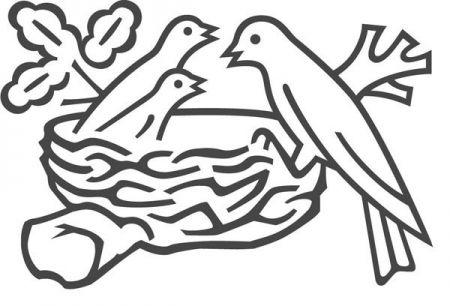
The original company logo Nestlé, founded in the 60s of the 19th century, looked like this: nest with three chicks and their mother. As a trademark for its first product, Henri Nestlé (Henri Nestlé) used the family coat of arms. At that time it was considered the traditional family, parents and three children. Later, towards the middle of the 20th century, the tradition changed. Changed and logo. Now in the nest, traditionally for Europe, only 2 chicks.
Marlboro
Marlboro brand appeared for the first time in 1924 and positioned itself as the first women's cigarettes. Was picked up by a purely female slogan: «Mild as May» - «Delicate as May". As the face of the brand was invited to Hollywood star Mae West. On the ladies' audience was targeted and packing: filter with a strip of red face a dual challenge: to hide sloppy trail of lipstick and white teeth protect women against yellowing. But no matter how trying advertising specialists, the product was not enough attractive to women: from cigarettes spoiled breath, yellowing teeth and there is a painful dry cough. Therefore, in order to survive in the market two decades later the brand had a sex change.
In order to change the perception of filter cigarettes as a product "for girls", Philip Morris invited one of the best American specialists on advertising - Leo Burnett, who came up with the image of "Cowboy - tamer prairie." Cowboy - the embodiment of the American spirit - touched a nerve consumers. Posters reminded of these heroes of America - brutal guys endearing wild steppes. They conquered all - men and women, blacks and Latinos. Marlboro sales in just one year have grown so much that began to occupy the fourth position in the ranking of sales of all tobacco products.
In addition, Malrboro were produced in which later became standard packaging «Flip-top» - pencil case made of hard cardboard with a hinged lid. This package may have as a purely practical (not hesitated cigarettes) and a tremendous marketing value - now the smoker had to show others a pack every time he was going to smoke, because the open «flip-top» pocket was uncomfortable.
Red Bull
When the drink is taken out for a wider market (Europe, USA), the main competitors were and Coca-Cola, and Pepsi, and Molson, and Labatt, and Anheuser-Busch. The concept was similar at all - they are energizing and stimulating, and Energy Jolt Cola contained, among other things also double as compared to Red Bull, caffeine.
Then Dietrich Mateschitz went on a risky move: to artificially inflate the price in half compared to the competition, reduced the amount of packaging, reminiscent of the battery, and began to place banks in departments stores do not drink, and any other (note, when once just go to the store - Red Bull cans together with other power companies can be found almost in the sausage department).
The blow was also dealt to forge the future of urban professionals - campuses. To begin with the company's employees began to distribute to students with boxes of Red Bull a prerequisite for the subsequent conduct of the target party. The focus is not on the taste (of course!), And "energy" drink-esteem: "One small cylinder - and proplyashete night!" On student revels Red Bull went with a bang, as randomly and happy coincidence quickly discovered that " broth rickshaws "ideally placed for vodka and" Master of the Hunt "! Thus were born the new giperpopulyarny Cocktail Vodka Red Bull, affectionately nicknamed by the people "Rizhikov» (Reddy) or "an enraged bull» (Raging Bull).
ARIEL
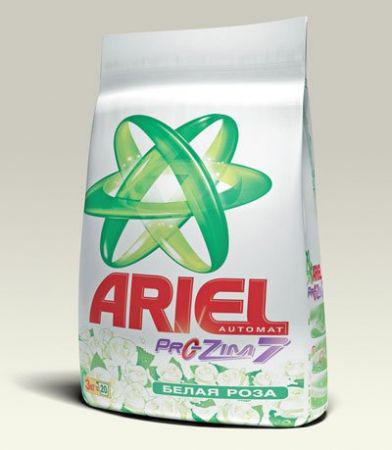
Rumor has it that the so-called casual fridays, when you can depart from the strict dress code adopted in large companies and official costume change for casual clothes, came up with P & G for promotional purposes. In the 80 years of the 20th century, the world's largest company P & G has been a leader in the market of detergents in the United States. But, despite the high advertising activity, market share did not want to grow. Then the company conducted a study to assess the market and garment care. The percentage revealed that the powder is used in 65% of cases, and dry cleaning - 35%. Further, the company found that 70% of consumers are washing powder are employed and 5 out of 7 days a week go to the suits that they give to the dry cleaners.
Further, the joint research P & G and Levi Strauss Jeans showed that employees in casual clothes creativity and work much more effectively those who wear suits. And what did they do? P & G within the company introduces the right to go on Friday in everyday clothes. This news efforts of both companies received huge coverage in the press, and many corporations have followed suit. Washing powder market grew by 20%.

Some modern sellers just give two pieces of three (as in the photo in the header). These professionals affect people thinner SNICKERS

In Russia the first Snickers chocolate bars appeared in 1992 and positioned as a snack, which replaces a complete meal. Former Soviet consumer a long time to get used to the fact that instead of soup for lunch, you can eat chocolate, Snickers and bought as a "sweet tea". After the brand was engaged in creative services agency BBDO Moscow, Snickers repositioned for teenagers who for the most part like all sweet and do not like soup.
Alka-Seltzer

Once in the 1960s in advertising Alka-Seltzer threw a glass of water, not one as before, but two tablets - drug sales grew exactly twice. Cunning publicity stunt invented agency Tinker & Partners.
There are similar stories about the brilliant marketer who first came up with instructions on how to use a shampoo that it should be applied to the hair and wash twice, which led to double-digit growth in sales.
Pepsi
Pepsi in the Soviet Union, Nikita Khrushchev, first advertised.

PepsiCo's Don Kendall pours another Pepsi for Premier Nikita Khruschev at the American National Exhibition in Moscow in 1959 as US Vice President Richard Nixon looks on. Photo from www.usatoday.com
In 1959, at the American National Exhibition in Moscow in Sokolniki Americans, skillfully playing the role of hosts, Nikita Khrushchev offered a drink on the sample. A picture in which the Soviet leader holding a cup with the logo of Pepsi, delayed to come down from the pages of newspapers and magazines advertising. The significant moment in the history of the brand is considered a "Happy Birthday» Pepsi in Russia.
Parliament
Tobacco brand Parliament went the other way. Initially, his prices were below the main competitor Marlboro, and sales have been relatively modest, as they are faced with many competitors in the low price category in which feature their exclusive filter no one appreciated. Then the brand a year left the market and went out again at a price higher than Marlboro, once hitting a niche "premium" which is just different from all other filter came into the season.
Woolworth

The founder of the largest network of stores Woolworth and inventor tsennnikov grocery and supermarkets found the right insight that allowed him to put together millions fainting from fear. Shy and stammering young man from the village, aged 21, got a salesman in a small shop. While the price of goods in shops, placed on the counter for the seller is not specified. Seller "by eye" defines the creditworthiness of the buyer, and called its price. Then the buyer or traded, or care. Poor Frank did not know how and was very afraid to entice buyers, praising the goods and haggle. So afraid that one day even fainted during service. As punishment, the shopkeeper punished him so that he left to trade one for the day, threatening that if the revenue is less than the normal day, he was fired. Before opening the store Frank attached to all goods piece of paper with the minimum possible price (prototype of the modern price tag). All unsold goods piled up in the warehouse, he put on a huge table with attachment plate with the inscription "All five cents." He put the table near the window so that the goods, and the plate was visible from the street. And shaking with fear waited for customers by hiding behind the counter. All merchandise was sold out in a few hours, and revenue per day was smooth week. Buyers, second-hand goods in the hands and saw it written on the price without haggling gave money. Frank retired from the owner, took the money and opened his own shop. In 1919, Woolworth empire consisted of thousands of shops, and a personal fortune of Frank was about 65 million.
"Guinness World Records»

The famous and the best-selling (after the Bible) "Guinness World Records" is nothing more than a publicity stunt invented by Managing Director brewing company Guinness, Sir Hugh Beaver.
In 1954, at a dinner hosted by "Wexford" for hunters, Hugh Beaver launched into a discussion with someone of the guests who fly faster - plover or the grouse. And then it dawned on Beaver and that across the globe during just such a small get-togethers over a beer unfolding real debate on "the most most." He decided that he should create a book that will contain the records officially confirmed in all sorts of areas.
Year went to research, and August 27, 1955 the first 198-page book was ready. The success was stunning: before Christmas she became a bestseller in the UK, bringing the beer brand a good income.
Dewar's
In London in the late 19th century were very popular brandy, rum and gin. Therefore, to promote the whiskey was not easy. Tricky Thomas Dewar, one of the founders of the family brand, chose an unexpected strategy. He hired straw buyers who visited various pubs, requiring them to pour whiskey Dewar's. Naturally, it will not be available, and they left. After several parishes Dewar himself appeared at the bar and offered to sign a contract on the supply of whiskey.
Camel
One of America's first teaser ads tried tobacco brand Camel in 1913. Deciding that a camel is not only catchy bright picture, but also an excellent opportunity for advertising innovations, experts tobacco company RJR for a few days before the first consignment of cigarettes on sale in the newspapers gave almost ninety American cities cryptic announcement. "Camels" - read the first one. A few displays the message "The camels are coming," and then - "Tomorrow in camels will be greater than in Asia and Africa together!" The next morning, frightened and intrigued Americans finally learned the truth. "Camel cigarettes are here!" - Read the final ads.
Nestlé

The original company logo Nestlé, founded in the 60s of the 19th century, looked like this: nest with three chicks and their mother. As a trademark for its first product, Henri Nestlé (Henri Nestlé) used the family coat of arms. At that time it was considered the traditional family, parents and three children. Later, towards the middle of the 20th century, the tradition changed. Changed and logo. Now in the nest, traditionally for Europe, only 2 chicks.
Marlboro
Marlboro brand appeared for the first time in 1924 and positioned itself as the first women's cigarettes. Was picked up by a purely female slogan: «Mild as May» - «Delicate as May". As the face of the brand was invited to Hollywood star Mae West. On the ladies' audience was targeted and packing: filter with a strip of red face a dual challenge: to hide sloppy trail of lipstick and white teeth protect women against yellowing. But no matter how trying advertising specialists, the product was not enough attractive to women: from cigarettes spoiled breath, yellowing teeth and there is a painful dry cough. Therefore, in order to survive in the market two decades later the brand had a sex change.
In order to change the perception of filter cigarettes as a product "for girls", Philip Morris invited one of the best American specialists on advertising - Leo Burnett, who came up with the image of "Cowboy - tamer prairie." Cowboy - the embodiment of the American spirit - touched a nerve consumers. Posters reminded of these heroes of America - brutal guys endearing wild steppes. They conquered all - men and women, blacks and Latinos. Marlboro sales in just one year have grown so much that began to occupy the fourth position in the ranking of sales of all tobacco products.
In addition, Malrboro were produced in which later became standard packaging «Flip-top» - pencil case made of hard cardboard with a hinged lid. This package may have as a purely practical (not hesitated cigarettes) and a tremendous marketing value - now the smoker had to show others a pack every time he was going to smoke, because the open «flip-top» pocket was uncomfortable.
Red Bull
When the drink is taken out for a wider market (Europe, USA), the main competitors were and Coca-Cola, and Pepsi, and Molson, and Labatt, and Anheuser-Busch. The concept was similar at all - they are energizing and stimulating, and Energy Jolt Cola contained, among other things also double as compared to Red Bull, caffeine.
Then Dietrich Mateschitz went on a risky move: to artificially inflate the price in half compared to the competition, reduced the amount of packaging, reminiscent of the battery, and began to place banks in departments stores do not drink, and any other (note, when once just go to the store - Red Bull cans together with other power companies can be found almost in the sausage department).
The blow was also dealt to forge the future of urban professionals - campuses. To begin with the company's employees began to distribute to students with boxes of Red Bull a prerequisite for the subsequent conduct of the target party. The focus is not on the taste (of course!), And "energy" drink-esteem: "One small cylinder - and proplyashete night!" On student revels Red Bull went with a bang, as randomly and happy coincidence quickly discovered that " broth rickshaws "ideally placed for vodka and" Master of the Hunt "! Thus were born the new giperpopulyarny Cocktail Vodka Red Bull, affectionately nicknamed by the people "Rizhikov» (Reddy) or "an enraged bull» (Raging Bull).
ARIEL

Rumor has it that the so-called casual fridays, when you can depart from the strict dress code adopted in large companies and official costume change for casual clothes, came up with P & G for promotional purposes. In the 80 years of the 20th century, the world's largest company P & G has been a leader in the market of detergents in the United States. But, despite the high advertising activity, market share did not want to grow. Then the company conducted a study to assess the market and garment care. The percentage revealed that the powder is used in 65% of cases, and dry cleaning - 35%. Further, the company found that 70% of consumers are washing powder are employed and 5 out of 7 days a week go to the suits that they give to the dry cleaners.
Further, the joint research P & G and Levi Strauss Jeans showed that employees in casual clothes creativity and work much more effectively those who wear suits. And what did they do? P & G within the company introduces the right to go on Friday in everyday clothes. This news efforts of both companies received huge coverage in the press, and many corporations have followed suit. Washing powder market grew by 20%.





















